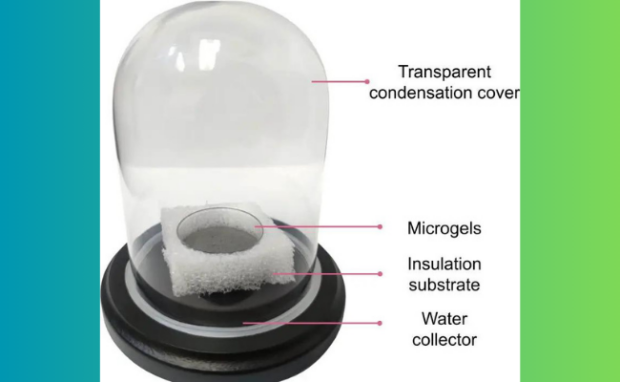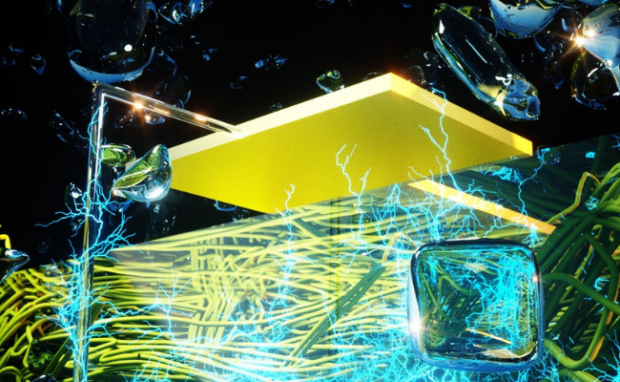Device turns hot air into drinking water
University of Texas researchers created a device that turns the summer air into drinking water. Science and engineering professor Guihau Yu explained the device uses solar energy and a special hydrogel that extracts water out of thin air. As a result, it could help third-world countries to access clean, potable water in dry climates.
It’s easy to assume water never runs out because our planet looks blue with expansive oceans. However, drinkable water is becoming scarcer, prompting many to look for alternative sources and purification methods. If the University of Texas researchers refine their wondrous device, it could help save millions from dehydration.
This article will discuss how Austin researchers built their wondrous water device. Later, I will cover similar projects that extract water from unusual sources.
How does the water device work?

Photo Credit: scitechdaily.com
Austin, Texas, is usually hot, especially during the summer. It is probably one of the inspirations behind the University of Texas’ water device. Its secret is its molecularly engineered hydrogel that can create water using solar energy.
SciTechDaily says the machine produces between 3.5 and 7 kg of water per kg of gel materials, depending on humidity. “With our new hydrogel, we’re not just pulling water out of thin air,” said Cockrell School of Engineering professor Guihua Yu.
“We’re doing it extremely fast and without consuming too much energy. What’s really fascinating about our hydrogel is how it releases water.”
“Think about a hot Texas summer. We could just use our temperatures’ natural ups and downs. No need to crank up any heaters,” he added. Consequently, people in areas with excess heat could place the device outdoors to produce water automatically.
“By transforming the hydrogel into micro-sized particles, we can make the water capture and release ultrafast,” said Weixin Guan, a graduate student in Yu’s lab and one of the research leaders. “This offers a new, highly efficient type of sorbents that can significantly enhance the water production by multiple daily cycling.”
You may also like: Nano rocket thruster uses water as fuel
“We developed this device with the ultimate goal to be available to people around the world who need quick and consistent access to clean, drinkable water, particularly in those arid areas,” stated Yaxuan Zhao, another student from Yu’s laboratory.
SciTechDaily says the researchers want to turn their water device into a tangible and scalable solution for an affordable and portable method of producing clean, potable water worldwide. That is why they are testing other versions of the device using organic materials.
Alternative materials could turn the invention into a commercially viable global product. Moreover, they are exploring easy to make the machine portable for various applications.
Are there projects similar to the water device?

Photo Credit: umass.edu
Other US-based universities have been exploring ways to produce resources from thin air. For example, the University of Massachusetts found a way to create electricity from humid air.
Professor Jun Yao said he and his team didn’t intend that feature. “To be frank, it was an accident. We were actually interested in making a simple sensor for humidity in the air,” he said.
They created a machine with an array of microscopic tubes called nanowires. Each was less than one-thousandth the diameter of a human hair but wide enough for airborne water particles to pass through.
“But for whatever reason, the student who was working on that forgot to plug in the power,” Yao added. Consequently, water molecules bumped inside the tubes, producing a small charge.
Both ends gained positive and negative charges as their movement continued. “So it’s really like a battery,” told Yao. “You have a positive pull and a negative pull, and when you connect them, the charge is going to flow,” he added.
You may also like: Scientists turn flies into biodegradable plastic
“The beauty is that the air is everywhere…. in principle, we can stack multiple layers in vertical space to increase the power,” the professor claimed. As a result, it might become a renewable energy source soon.
NASA also made strides with its new water device. It can turn 98% of waste and surrounding air into water. “This is a very important step forward in the evolution of life support systems,” said Christopher Brown, one of the people managing the Johnson Space Center’s life support system
“Let’s say you collect 100 pounds of water at the station. You lose two pounds of that, and the other 98% just keeps going around and around. Keeping that running is a pretty awesome achievement.”
Conclusion
The University of Massachusetts developed a machine that can make water from humid air. However, Yu and his team require more research and development to turn it into a commercial product.
Someday, this water device could become a staple for arid nations. People in hot regions like the Philippines may place the machine outdoors to extract water while they perform other tasks.
People should become aware of these green projects to help them gain support and make a positive impact worldwide. Learn more about other similar trends at Inquirer Tech.